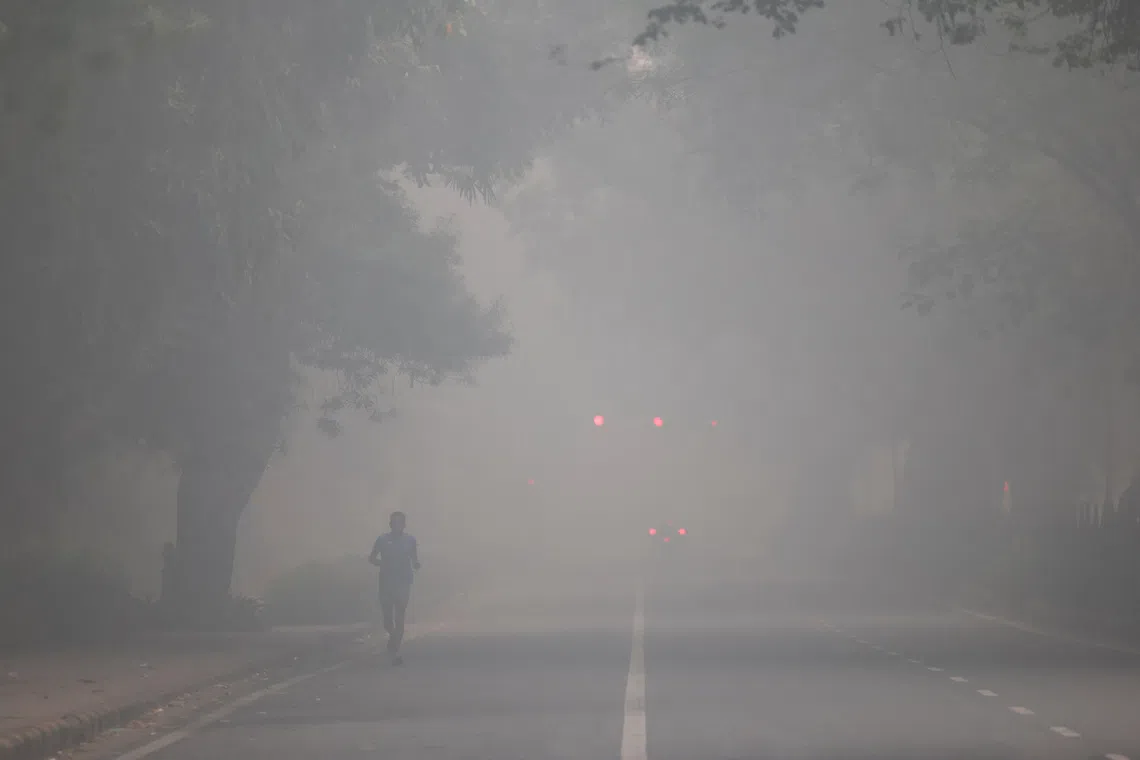New Delhi air quality at hazardous levels after Diwali firecracker ban relaxation
Sign up now: Get ST's newsletters delivered to your inbox

A man jogging on a road shrouded in smog on the day after Diwali, in New Delhi, India, on Oct 21.
PHOTO: REUTERS
Follow topic:
NEW DELHI – Air quality in India’s capital New Delhi deteriorated to hazardous levels on Oct 21 with readings the highest in the world
The Supreme Court of India last week relaxed a ban on firecrackers in the city, permitting the use of so-called “green crackers” for a maximum three hours each on Oct 19 and 20, although Reuters witnesses saw crackers being set off outside the allotted times.
Emissions from the crackers are 30 to 50 per cent lower than conventional fireworks.
IQAir’s reading for New Delhi was 442, making the Indian capital the world’s most polluted major city. Its PM 2.5 concentration was more than 59 times the World Health Organisation’s recommended annual guideline.
PM 2.5 refers to particulate matter measuring 2.5 microns or less in diameter that can be carried into the lungs, posing deadly disease and cardiac problems.
India’s Central Pollution Control Board (CPCB) rated the city’s air quality “very poor” with an air quality index (AQI) measurement of 350. CPCB considers an AQI of 0 to 50 as good.
New Delhi is unlikely to get relief in the coming days, with the earth sciences ministry forecasting air quality will remain in the “Very Poor to Poor” category with AQI levels between 201 and 400.
The capital and its neighbouring districts are prone to a thick smog every winter as cold, heavy air traps construction dust, vehicle emissions and smoke from agricultural fires, leaving many of its 20 million residents struggling with respiratory illnesses.
In the past, authorities have closed schools, stopped some building work and placed restrictions on private vehicles to tackle the problem.
India is not alone among South Asian nations in battling toxic air.
In Pakistan’s Punjab province, which shares a border with India, the government has implemented an emergency plan to tackle pollution, which includes action against farm fires and smoke-emitting vehicles, and use of anti-smog guns in polluted areas.
The air quality reading for Lahore, Punjab’s capital, was 234, the second highest in the world, IQAir data showed.
“Right now, the major issue is the air coming from Indian Punjab and other parts, which is affecting the air quality in various parts of Pakistani Punjab,” said Mr Sajid Bashir, a spokesperson for Punjab’s Environment Protection Agency. REUTERS

